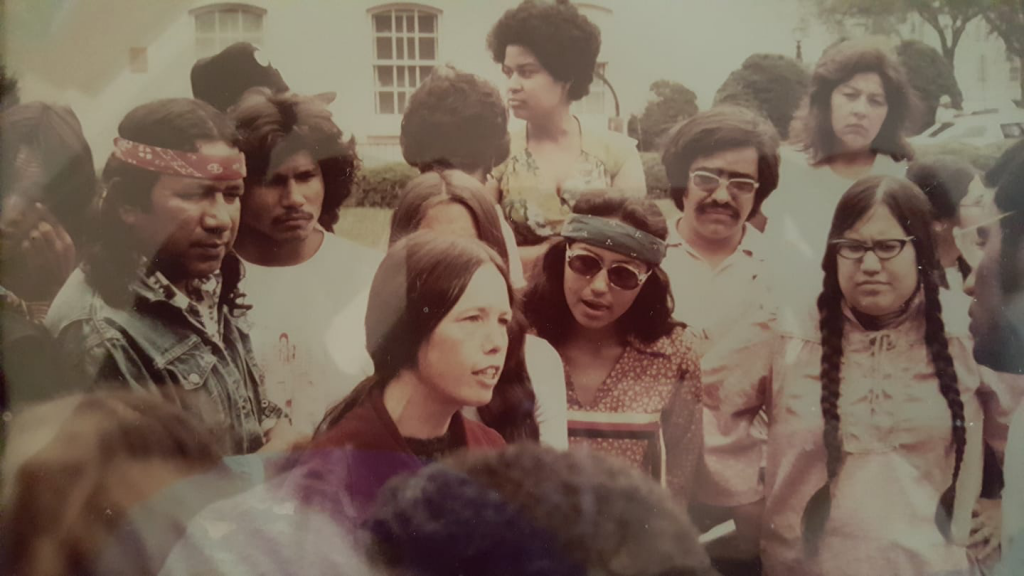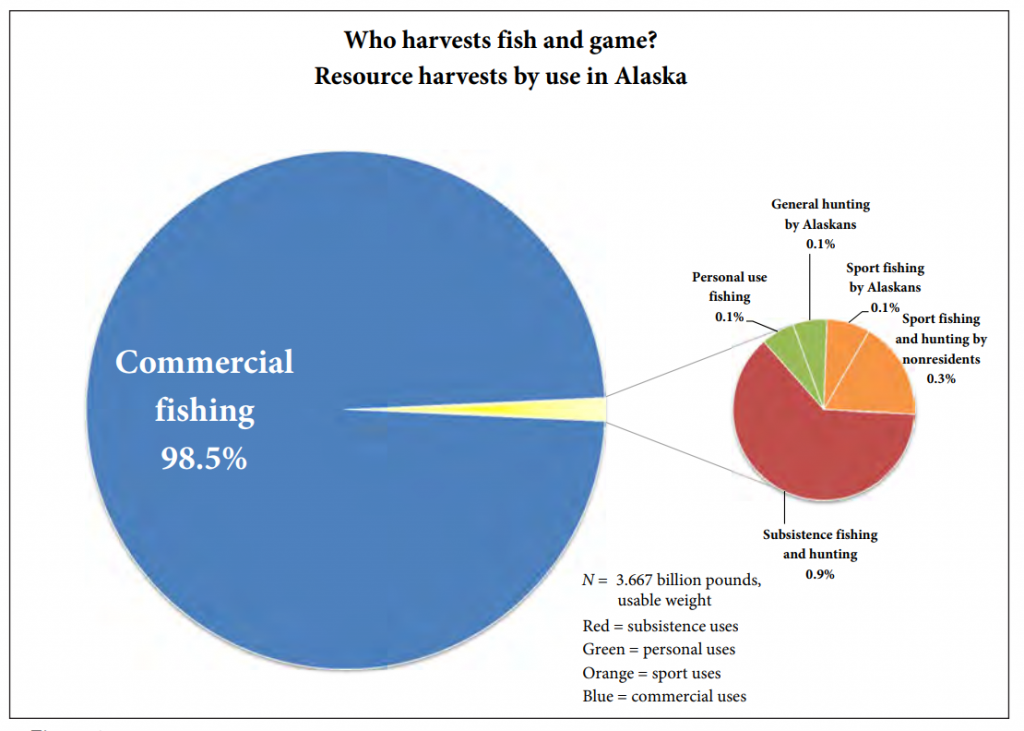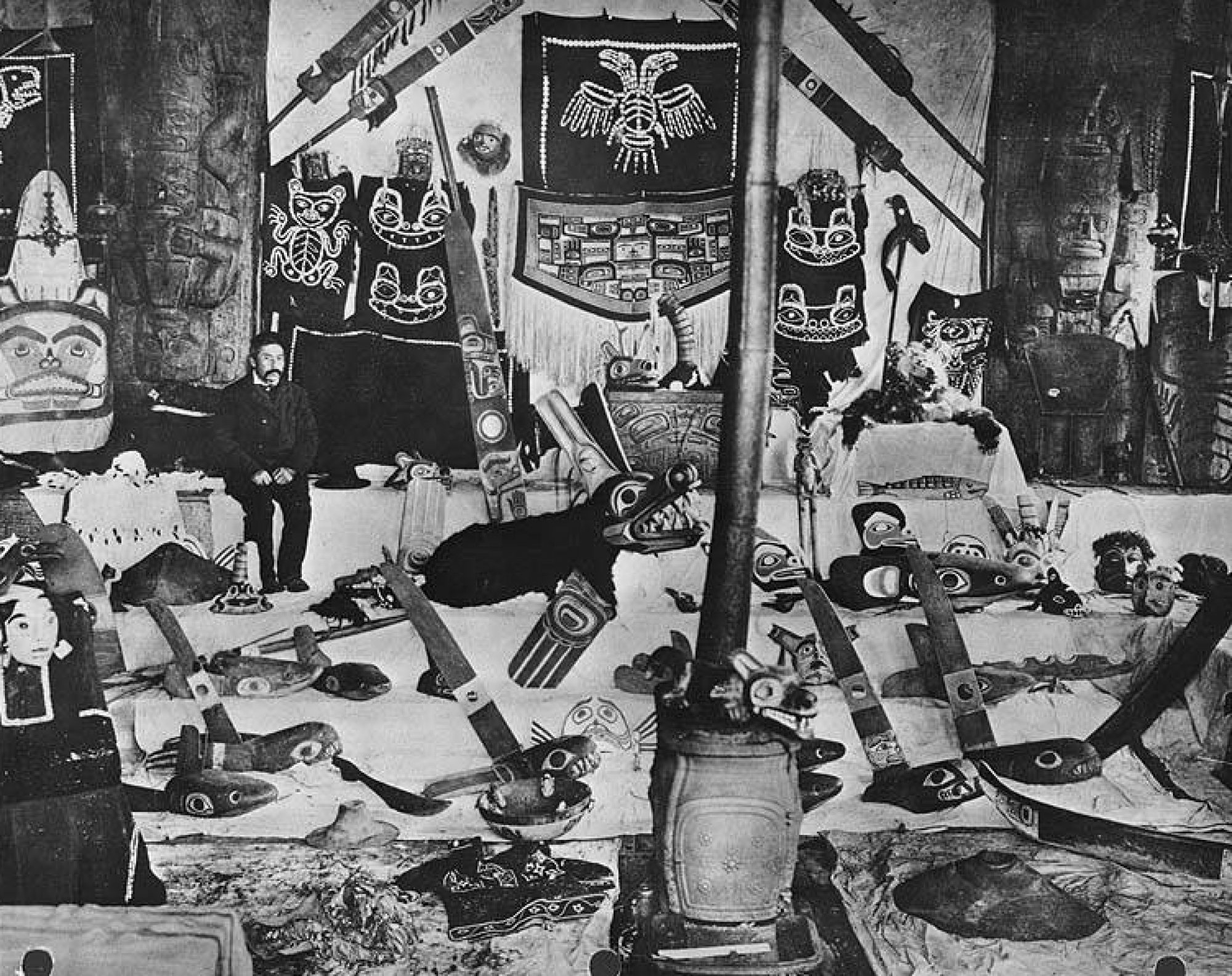Biographical Timeline | Leadership Qualities |Little Shell Chippewa Recognition | References
Ramona Bennett – Leadership Qualities
Biographical Timeline | Leadership Qualities | Little Shell Chippewa Recognition | References
Compassionate
Throughout all of her as a hardworking activist, Ramona never lost sight of what it means to be a leader to her people. A big component of her leadership qualities is compassion; Ramona has always had the well-being of everyone in mind as she fought for more Tribal rights. In 1978, Ramona was able to secure the National Indian Child Welfare Act. This act was solely intended for assisting Native children who would be possibly mistreated by the WA child service laws, which might separate the child from their family. Adding to her generosity and selflessness toward children, she founded the Rainbow Youth and Family Services in 1989. The goal of this organization was to protect Native children from any hate, abuse, neglect, or anything traumatic. More than that, this organization would connect these children to foster parents or to parents who are learning about the process of adoption and would like to take these traumatized children into their families. Ramona’s compassion is not forgotten by many, even after the many years that may pass after she has performed kind deeds for others. When Claudia Kauffman presented Ramona with the 2018 Bernie Whitebear Award, she recalled how helpful Ramona was toward her family. In order to allow Kauffman’s family to attend yearly powwows, Ramona would pick them all up, feed them sandwiches and snacks, and drive them all to the powwows. The compassion that Ramona Bennett has for her Tribe as well as her friends and supporters is remarkable. To this day, Ramona is active in fighting for Tribal rights while still making sure that everyone around her is well-cared for and protected, making her an amazing example of a compassionate leader.
Inspiring
Almost all of Ramona Bennett’s achievements would have never come to fruition had she not been able to rally supporters into action. She inspires her people, and has been inspiring them since back in the 1960s. Ramona led her people in a misunderstanding between her people and the law enforcement that resulted in what is now known as the BIA Takeover of 1972. There were threats made by the U.S. government to break down the doors and barge into the BIA office to arrest the occupants, but Ramona stood strong against these words and performed in such a way that inspired the people with her to stand strong with her. Later, in 1976, Ramona again led her people to seize the Tacoma Cushman hospital, claiming it as the property of the Puyallup Tribe. Alone, Ramona would have been unable to perform such a feat. But she was not alone; she had accrued a following in her time as the Chairwoman of the Puyallup Tribe, and her followers readily marched with their leader to take back their property. Even in recent times, Ramona has been present in the protests against the Tacoma Natural Gas project that will ruin Puget Sound. There is no doubt that a strong activist like Ramona Bennett bolsters the the protestors and makes them fight harder against the gas project. More than that, she gave a speech back in 2012 demanding clemency for Leonard Peltier, adding more fuel to this fiery battle for Peltier. For her entire career as an activist, Ramona Bennett has managed some incredible feats. However, many of these feats were made possible through her ability to be an inspiring character that her people would readily want to follow through thick and thin.

Resilient
Despite enduring tumultuous hardships, Ramona has continued to advocate for the human rights of Indigenous peoples across America as well as Natives across the PNW. In the face of discrimination and violence, Ramona has accomplished and paved the way for multiple pieces of legislation to be passed. She has faced police brutality and numerous loses and setbacks but has continued to fight for Native rights for over sixty years. When she started participating in fish-ins she was not discouraged in the face of continuous police harassment and brutality. When police came with clubs and riffles, Ramona was arrested along with numerous other protesters, but she was soon bailed out and despite her fear, went back into the fray. In 2013 at a meeting for solidarity with Chief Theresa Spence, Ramona offered her own words on the perseverance of Indigenous activism: “Keep it up, keep shouting, keep fighting. If all you have is your body put it there. Your ancestors did, they fought for every right you enjoy! Freedom of religion, property, resources, and you know what your great great great grandchildren will do the same thing. That’s the indian, that’s who we are, that’s why we’re here.” At the age of 81, Ramona continues to fight for tribal rights today, as her own Puyallup tribe fights against a fracked gas facility being built on their land, and will most likely never stop. Her enduring spirit and unwavering devotion to her cause has inspired many to take up the fight for Indigenous rights and has allowed the Puyallup tribe to flourish. Her never-ending resilience throughout decades of turmoil has not only inspired others in her community but makes her a fantastic leader and shows what can be accomplished with dedication.
Katie John (Athabaskan)- Biographical Timeline
Billy Frank Jr. – Biographical Timeline
Billy Frank Jr. – Fishing Rights in Alaska
Biographical Timeline | Leadership Qualities | Fishing Rights in Alaska | References
In October 2012, fishing on the Kuskokwim River in Southwest Alaska was closed due to low amounts of king salmon during a salmon run. Native fishermen who depend on salmon, decided to ignore the closure because they believed their rights surpassed the state’s decision to close the river. Alaska State Troopers were notified of the defiant act and descended upon the river, apprehended dozens of nets, and more than 1,000 pounds of fish. The state pressed charges against sixty-one fishermen. This event sparred a rally, not the first rally for fishing rights, and certainly not the last. Alaskans gathered together to demand indigenous fishing and hunting rights be restored. These rights were eliminated under the Alaska Native Claims Settlement Act in 1971 and since then, Alaska natives often find themselves in a losing battle of rules, regulations, and jurisdiction. In 1980, congress attempted to fix this by enacting the Alaska National Interest Lands Conservation Act (ANILCA). In theory, ANILCA was meant to help Alaska Natives by allowing subsistence hunting. However, ANILCA also allowed any rural resident to engage in subsistence hunting if they could prove residency in Alaska for one year. Subsistence fishing and hunting has been a continuing concern for Alaska’s Natives with no end in sight.

In 1971, the Alaska Native Claims Settlement Act attempted to resolve land claims of Alaska’s Natives. This act gave the legal title of forty-four million acres of land to Alaska’s Natives if it was considered unappropriated and unreserved. Alaska’s Natives were also awarded a $962.5 million settlement. The Settlement Act allowed the development of regional, and smaller village corporations in which all Natives were eligible to be shareholders. These corporations were under Alaska state law and there were no restrictions on using or selling the land. In the continental United States, almost all Native lands are owned by the federal government and cannot be used without the consent of the United States. Because of this difference between Alaska and the continental United States, the Alaska’s Natives’ land is not considered Indian Country and the Natives do not have governmental powers over them. Aboriginal hunting and fishing rights were exterminated despite that subsistence hunting takes less than one percent of the resources. Alaska Natives are required to comply with state laws everywhere in the state. These laws interfere with Alaska Natives’ traditional ways of life and began a lengthy battle for Natives rights.
Some success was meant to come in 1980 when the Alaska National Interest Lands Conservation Act was enacted. The ANILCA is a piece of federal legislation providing protection to millions of acres of land in Alaska. Under this act the Alaska Native Claims Settlement Act was implemented more specifically. The ANILCA specifies the designation of wilderness and subsistence management. Since ANILCA, Alaska Natives have practiced subsistence fishing just as they have for hundreds of years. However, Alaska Natives face the frustrating reality that their rights have been restricted. State and federal management of fish and game conflict at times and Alaska Natives become the victim of a diverging government.
Were Billy Frank, Jr. alive today, he would have stood with Alaska Natives in preserving their right to continue subsistence hunting and fishing without regulations from the government. Billy Frank, Jr. was a passionate, and resilient leader. He cared deeply for the preservation of his home, traditions, and people. If Billy Frank, Jr. would have been present in October 2012, it can be speculated that he would continue subsistence fishing despite facing charges from the state government. This assumption comes from the dozens of time Billy Frank, Jr. was arrested for fishing when the government had placed regulations that he did not believe were fair or just. Billy Frank, Jr. believed he had a right to live off the land as his ancestors had for hundreds of years. He trusted that being consistent and resilient would serve his purpose and bring attention to the overlooked travesty of indigenous peoples’ rights.
As an inspirational leader, Billy Frank, Jr. would have done more than just participated in fishing. At his core, he was an activist. He spent his entire life fighting for the rights of indigenous people and held many influential positions including chairman of the Northwest Indian Fisheries Commission. Billy Frank, Jr. was defiant, but he was not brash. His actions had thoughtful and strategic purpose. He would have taken time to completely understand the situation and then determined practical solutions. As a reasonable man, Billy Frank, Jr. would have actively sought influential people in government to help his cause. This assumption comes from the video clip, below. In this clip, he speaks about “going together” to the government. It was not fair to let the united states congress, or state legislature dictate the rights of indigenous people without the opinions of indigenous people. Billy Frank, Jr. had a deep understanding that solutions are created from fair representation and compromise between parties and he would have continuously fought for the Alaska Natives’ right to fish.
